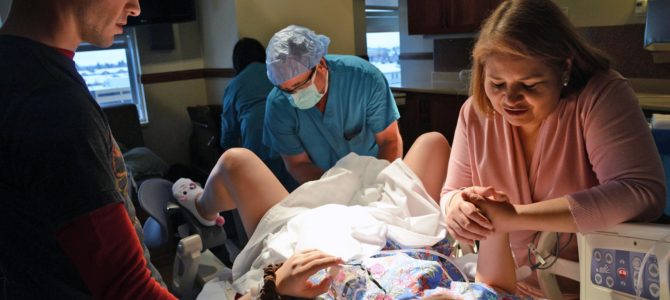
If ever there were a predictable story, it’s the one about the birds and bees. However, as we become adults, we learn that even when we want to become parents, things can go sideways for all sorts of reasons.
Elizabeth Katkin, an accomplished lawyer who experienced numerous medical obstacles on her winding way to motherhood, recently released “Conceivability: What I Learned Exploring the Frontiers of Fertility,” a memoir and how-to guide based on her experiences. Unlike other fertility memoirs, this book is likely to appeal to two separate, but possibly overlapping groups: those on fertility journeys who seek advice about best practices and those interested in bioethics — a group that should include all of us.
The New Bioethical Wild West
Reading Katkin’s story is like reading the detailed notes of your always prepared friend. Like an honorary big sister, she’s been through something big and wants to tell you all she’s learned, so you can avoid the pitfalls she’s already encountered.
For example, she writes: “While it would certainly be nice if [everything] I just described led to clear instructions, like those generated in mere seconds by the GPS in your phone or car, unfortunately, finding one’s way through the maze of infertility treatments more closely resembles navigating through the woods with a compass.”
Katkin writes engagingly about her own nine-year struggle not only to conceive, which she does numerous times, but also to carry a healthy pregnancy to term, which never happens. Along the way, Katkin demonstrates an incredible level of persistence, as she takes headache-inducing Clomid, undergoes ten invitro fertilization cycles, endures seven miscarriages, sees ten doctors in six countries, and spends nearly $200,000 in pursuit of parenthood.
Katkin’s moving descriptions of her miscarriages, along with her unwillingness to quit, illustrate the power of the biological imperative. Wanting to bear and raise one’s own children is a natural inclination, and when it doesn’t come easily, we are inclined to fight for it. And fight Katkin does. After all those years, Katkin and her husband finally succeed in having two children through a surrogate. That may offer hope to others on their own fertility journeys.
Ignoring These Dangers Has Allowed Them To Expand
This brings us to the second part of the book. While Katkin’s surrogacy story will unsettle some readers, the rest of the book should trouble every American. Forty years after the birth of Louise Brown, the first test tube baby, assisted reproductive technology has traveled light years. However, our moral and legal frameworks for managing those advances remain woefully inadequate. Laws vary by state, and existing laws disregard many pressing issues, because like an ostrich with its head in the sand, our nation has ignored these issues. We shouldn’t.
Let’s start simply with the raw materials of conception. Katkin notes the oddity of us referring to egg and sperm “donation,” when it is widely known that “donors” are paid. Are we, as a society, alright with that? What about these donors insisting on anonymity, meaning that their offspring will never have access to personal or vital health information about one biological parent?
Other countries limit the number of children a sperm donor can father. The United States does not, leading kids in the Bay Area to memorize their donor’s ID number, lest they inadvertently date a half-sibling. Are we comfortable with that? Sperm donation is quick and easy, but there are potential health risks to egg donation. What should women know before putting themselves in that position?
Where IVF is concerned, it’s a business as much as it’s medicine. So while other nations cap the number of embryos a doctor can legally implant, the United States has no such restrictions. Doctors worry about their success rates, which the Centers for Disease Control tracks, and may be inclined to implant several embryos to improve their statistics. Such a single-minded focus can lead a doctor to downplay or completely neglect to mention potential health risks to the mother or her children.
‘I’ve Met a Lot of Women Quite Traumatized’
During a phone interview, Katkin told me, “I’ve met a lot of women quite traumatized by that. . . . couples who got pregnant with a minimum of four who were absolutely clear with their doctors that they were anti-multiples, anti-abortion or selective reduction, and the doctor kept pushing them, even when they said they said they didn’t want more than two.”
“One couple was Catholic and anti-abortion. They told their doctor they were against having to reduce. . . . The doctor put in three embryos, which they didn’t know, and one split, so they had identical and fraternal twins. As the pregnancy went on, they were at risk of losing all four. They got rid of the identical twins, and then the other two were born early at 1.5 and 1.9 pounds. The kids are five now, and the mom still can’t talk about it without crying. She’s racked with guilt. In my mind, that’s medically irresponsible, but it’s legal, because there’s no regulation. I’ve interviewed 20 couples, and three had this problem of four babies.”
Why are we putting people in this position? Is life precious or disposable? Also, is there anything crueler than asking people who have actively worked to start a family — sometimes for many years — to start parenthood by deciding which child to eliminate?
Surrogacy raises its own difficult questions. Laws vary across state lines, both with regard to compensation and assumed parentage. Do we Americans believe surrogacy commodifies women’s wombs and should be outlawed, that it should be legal as long as it’s unpaid, or that women should be compensated for accepting the myriad potential health problems associated with any pregnancy?
Do we believe that the law should — or should not — automatically protect the parental rights of those who hired the surrogate? Legally speaking, what should happen if a surrogate grows attached to the life she’s nurtured for nine months?
I don’t have the answers to all these questions, but as a society, we can’t keep ignoring them. As science progresses, moral and bioethical quandaries will only keep multiplying. It’s time we start debating what reasonable limits should look like.









